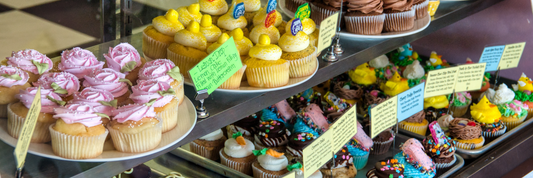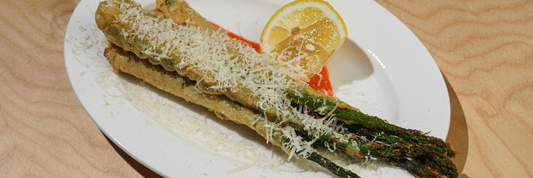Coated paperboard is a versatile and widely used material in various industries, particularly for packaging. From food and beverages to cosmetics and luxury goods, the right type of coated paperboard can enhance the aesthetics, durability, and functionality of your products. This blog post will explore the different types of coated paperboard, their key features, benefits, and common applications, helping you make an informed decision when choosing the ideal material for your packaging needs.
- Craft Paper vs. Kraft Paper: Which Is the Better Choice?
- Folding Carton vs. Corrugated Box: Understanding the Key Differences and Choosing the Right Packaging
- Folding Carton vs. Corrugated Box: Understanding the Key Differences and Choosing the Right Packaging
What is Coated Paperboard?
Coated paperboard is a type of paperboard that has been treated with a layer of coating to improve its surface properties. The coating can be made from materials like clay, polyethylene, or other substances, providing the paperboard with enhanced printability, durability, and moisture resistance. This makes coated paperboard an excellent choice for a wide range of applications, especially in packaging.
Benefits of Coating in Paperboard
The coating applied to paperboard offers several advantages, including:
- Improved Printability: Coated paperboard allows for sharper and more vibrant prints, making it ideal for products that require high-quality graphics and branding.
- Durability: The coating increases the paperboard's resistance to wear, moisture, and environmental factors.
- Enhanced Appearance: Coated surfaces often have a smooth, glossy finish, which enhances the visual appeal of the packaging.
Types of Coated Paperboard
Solid Bleached Sulfate (SBS)
Definition and Composition
SBS paperboard is made from bleached wood fibers, resulting in a bright white surface that offers excellent print quality.
Key Features
- Bright white surface
- High-quality printing
- Smooth finish
Common Uses
- Food packaging
- Cosmetics
- Medical products

Coated Unbleached Kraft (CUK)
Composition and Natural Appearance
CUK paperboard is made from unbleached kraft fibers, giving it a natural, brown appearance.
Benefits
- Durability and strength
- Moisture resistance
Common Uses
- Beverage carriers
- Detergent packaging

Coated Recycled Paperboard (CRB)
Use of Recycled Fibers
CRB is made from recycled paper fibers, making it an environmentally friendly option.
Limitations
- Lower strength than non-recycled options
- Increased moisture absorption
Applications
- Cereal boxes
- Tissue packaging
- Dry foods
Non-Bending Chipboard
Composition and Rigidity
This type of paperboard is rigid and made from thick layers of kraft paper, providing excellent strength and support.
Specialty Applications
- Luxury goods
- Rigid boxes
Folding Boxboard (FBB)
Lightweight, Low-Density Features
FBB is made from several layers of paperboard, giving it a lightweight yet strong structure.
Typical Uses
- Cigarette packaging
- Confectionary packaging
- Pharmaceutical packaging

Foilboard
Enhanced Aesthetic Appeal with Metallic Layers
Foilboard features a metallic coating that enhances the packaging’s visual appeal.
Applications in High-End Packaging
- Fragrance packaging
- Luxury items
Heavyweight Paperboard Options
Multi-Ply Strength for Industrial Use
Heavyweight paperboard options are made from multiple layers, providing enhanced strength for industrial applications.
Typical Applications
- Heavy-duty packaging
- Industrial use
Comparison of Coated Paperboard Types
Each type of coated paperboard has its own strengths and weaknesses. Here’s a quick comparison:
- SBS: High-quality printability, ideal for premium product packaging.
- CUK: Strong and durable, suitable for products that require moisture resistance.
- CRB: Environmentally friendly but less durable.
- Non-Bending Chipboard: Rigid and strong, perfect for luxury goods.
- FBB: Lightweight and ideal for consumer goods like cigarettes and pharmaceuticals.
- Foilboard: High-end aesthetic appeal, often used for luxury items.
- Heavyweight Paperboard: Strength and durability for industrial uses.
Coated Paperboard Manufacturing Processes
The coating process for paperboard typically involves applying a thin layer of coating materials like clay, polyethylene, or other polymers. These coatings can be applied using various techniques, including:
- Roller Coating
- Spray Coating
- Extrusion Coating
Each technique affects the final properties of the paperboard, including its printability, durability, and moisture resistance.
Applications of Coated Paperboard
Coated paperboard is used across several industries, such as:
- Food and Beverage Packaging: Coated paperboard provides a reliable and attractive option for food packaging, especially for products like cereals, snacks, and beverages.
- Medical and Pharmaceutical Packaging: The durability and moisture resistance of coated paperboard make it an ideal choice for packaging pharmaceuticals and medical supplies.
- Retail and Luxury Goods Packaging: Coated paperboard enhances the appearance of high-end products like perfumes, cosmetics, and luxury goods.
- Hardware and Heavy-Duty Applications: Heavyweight coated paperboard options are commonly used in packaging tools, machinery, and industrial products.
FAQs
What is the difference between SBS and CUK paperboard?
SBS is bleached for a bright white appearance and excellent print quality, while CUK is made from unbleached kraft fibers, giving it a more natural, brown look.
Is coated paperboard recyclable?
Yes, coated paperboard can be recycled, though some coatings may need to be separated during the recycling process.
Which type of coated paperboard is best for food packaging?
SBS is often the best choice for food packaging due to its high print quality and food-safe coating.
How does the coating affect print quality?
The coating enhances the print quality by providing a smooth surface for vibrant colors and sharp images.
Conclusion
Coated paperboard plays a crucial role in modern packaging, offering a range of options to suit various applications. Whether you're looking for high-quality printing, moisture resistance, or eco-friendly solutions, understanding the different types of coated paperboard can help you choose the best material for your packaging needs. Always consider the product's requirements, the environmental impact, and the desired aesthetics when selecting coated paperboard for your packaging solutions.




